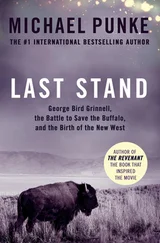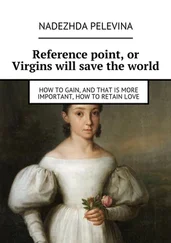Parrots are almost legendary for their longevity. There are many stories of parrots living in excess of 100 years and of birds that have become family heirlooms passed down between generations. Certainly there are birds that have been in families for many years, but the oldest documented birds have not lived beyond their sixties. 13 By the time macaws reach their fifties they often have cataracts, arthritis and are approaching senility. Some other birds live for a long time, members of the albatross family for example, 14 but the longevity of parrots is quite exceptional nonetheless.
Their human-like traits give parrots a unique personality and character. What other birds have so consistently managed to grab tabloid newspaper headlines? There have been stories of parrots that wolf-whistle at blondes, about a parrot that swore at wild birds when it got stuck up a tree in the garden, the parrot who told the firemen to rescue him before putting the fire out and the ship’s mascot that yelled ‘arse’ and ‘bollocks’ from a cupboard during an important speech by the Admiral and told the rating to ‘fuck off’ when asked to be quiet. There was another story about a parrot that telephoned the police when its owner was locked out.
Tens of millions of years of quite separate evolutionary advance lies between people and parrots. Yet the psychology of these birds and humans has uniquely converged. They are the most human-like of birds, which has made them irresistible to human curiosity. And the appeal seems to go both ways. Not only can parrots build long-term relationships with other parrots, but also with other long-lived sociable creatures – people.
Rosemary Low knows all about that. She has kept parrots for more than forty years. Starting with budgies when she was twelve, Low progressed from there to larger and more demanding species. She has a vast published literature to her name, including a seminal work on the care and breeding of parrots printed in three editions. 15 She has looked after some of the world’s largest parrot collections and has an impressive track record of breeding the birds in captivity. In the early 1960s at sixteen, she acquired an African Grey via a friend’s father who was a bank manager in Nigeria. She says it was her first real parrot and gave her many insights into the challenges of keeping the birds in captivity.
Low believes that parrots’ ability to mimic human sounds and to interact emotionally with people has been their downfall.
This is why the African Grey is so popular, but it is a tragedy. They are among the most sensitive birds and there is probably no parrot species less suited to a life in captivity. They have so many behavioural problems when caged. You practically need a degree in psychology to understand grey parrots. They are very clever birds. Like cockatoos they soon learn to manipulate people. The owners can’t cope with them any more so they get passed on from one place to another. It would be like a child finding itself in a new home every eighteen months or so. If it was a person it would be enough for it to end up in a psychiatric hospital.
Captive-bred parrots make better companions but cost at least twice as much. Until very recently there was little interest in breeding the likes of the more common species of amazon parrots, cockatoos or macaws for the pet market because they were so cheap and readily available from the wild. And costs aside, captive breeding is not as straightforward as it sounds.
With the larger and more intelligent parrots in particular, one of the main issues in captive breeding is compatibility. As is the case with humans, it is not sufficient to put a male and female parrot together and expect them to produce and rear young. A pair of birds randomly selected by human keepers can sit together for years and do nothing but, if provided with a partner they like, will nest immediately. Although it can be worth leaving birds together for a period to see if they will finally accept one another, placing parrots with incompatible partners can also lead to stress and emotional damage – something else people can relate to.
The natural commitment to one partner can translate into close relationships with their human keepers and has given pet parrots a reputation for devotion, faithfulness and affection. But the fact that parrots choose who they will or will not bond with can also be a source of disappointment for parrot owners. Having bought a bird, the new keeper can sometimes find that it decides to bond with another member of the human family or a friend. And parrots can also demonstrate fierce jealousy in taking a dislike to individuals whom they regard as competitors for the affections of their ‘partners’. Such selective bonding and expression of choice leads Low to believe that parrots are capable of almost human emotions.
The combination of this human-like emotional sophistication, an instinct for loyalty, the ability to mimic speech – and even to communicate with words – added to their astonishing and vivid beauty, has paradoxically proved a curse to the parrots. The range and depth of their attractions have made some species immensely valuable financially.
A large part of the problem is that parrots are highly collectable. Reminiscent of stamps, antiquarian books and paintings, there are lots of different kinds and several subsets for individual collectors to specialise in. Once the human obsession for rarity is added to the list of attractions in demand, then a lethal combination emerges: not least because one effect of scarcity is to escalate demand. This pushes up prices, leading to more trapping and then more scarcity. This market vortex has sucked down some species to the very brink of extinction.
Although most rare parrots are protected from trade under international law, as well as in most cases national legislation in the countries were they are found, the clandestine traffic in rare birds flourishes. Parrots are today part of an illegal trade in wildlife that ranks second in value only to the multibillion-dollar clandestine drugs and arms markets.
Even though the rarest and most protected kinds must often be kept in secret for fear of detection by the authorities, for the collectors there is still the irresistible allure of possessing birds that other people in your circle do not. The parallels with stolen works of art are surely apposite. The ‘owners’ enjoy the bird’s beauty and uniqueness with the added kick of exclusive control of an object passionately sought and admired by others. The fact that other clandestine collectors know (or believe) that you have it adds further to the attraction. This is a shadowy world of rumour, double-dealing and half-truths.
For some of the leading parrot collectors the challenge of breeding is important. Many also rationalise a conservation motive into their passion for rare birds, and in this respect a minority are sincere. But in the end it is rarity that is the sharpest spur. As in Ancient Rome, parrots are potent symbols of civilisation, wealth and high living; they remain in demand as expensive accessories of rich and powerful men. In this close-knit world, birds like Spix’s Macaws are the epitome of quality and grace; they are in the realm of the true elite.
At this end of the market, large sums of money change hands. Many thousands of dollars are routinely paid for a single rare parrot. But even though the resale value of birds and their offspring can be considerable, for the majority of these specialists cash is not the primary motivation. Some collectors spend fortunes on their parrot-keeping facilities and there is no way they could regain their costs from the sale of birds. A small number are much more businesslike and breed rare parrots on a commercial basis.
And where there is valuable property and jealousy, there is theft. Rare parrots are frequently stolen from their owners. The rarest and most endangered parrots are most at risk. Puerto Rican Parrots ( Amazona vittata ) are one of the most endangered of all species. Some of these birds are kept in breeding aviaries run by the US Government at the Luquillo National Forest on their native island. In April 2001 bird thieves broke in and took several birds despite the careful attention of the biologists who had been working for decades to save them from extinction.
Читать дальше












